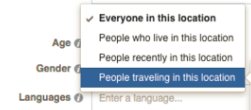When Facebook released its third quarter results in November, they revealed an opportunity for current advertisers, using IKEA’s recent time-based advertising as an example, of fine-tuning your timing for better results. The good news is that you already have all the data you need to make smart time-based ads, and Facebook lets you go deep with demographics to accurately target the best audience.
IKEA purchased carousel ads that served their Norwegian audience when their stores were closed. Facebook’s COO Sheryl Sandberg said:
“[T]hey turned a $35,000 investment in carousel ads into $2 million in sales which happened precisely when they want it to happen,”
We’ve highlighted the best times of the year for marketers (in the HR industry) to focus their efforts, but you can fine-tune your advertising even more – down to popular dates and time of day. This summer, we shared the best times for engaging people with your blog and social media content. These techniques included analyzing the audience’s reading habits by examining traffic sources and audience schedules. Effectively reaching your audience with paid social advertisements uses the same statistical analysis that you’ve probably mastered by now, but requires a slightly different strategy, delicately balancing timing, delivery platform and content.
The webspace is cluttered, but people still listen. The challenge is to get them to listen at the right time.
It’s 2015. Do you know where your audience is?
The average person consumes about 17 hours of media in a given day – almost equal to their entire waking day (with some overlap of certain media such as simultaneous radio and computer use, or tablet and tv use). Our average media time breaks down to:

- 2.8 hours a day of TV
- 7 hours on a computer
- 3 hours and 16 minutes a day on smartphones (and we reach for the phone more than 1,500 times each week)
- 3.1 hours a day on tablets
- Over 1.5 hours a day listening to radio
Of this screen-heavy, media-filled day, about 13 hours of our time is on digital, online devices. A considerable portion of this digital screen time is spent on social media.
- 28% of time online is spent on social networks.
- According to Media Dynamics Inc., for about every 600 minutes of media time, the average adult is exposed to over 360 ads, and actively notes over 150 (not to mention being passively or subconsciously exposed to hundreds or thousands more brands and brand messages every day)
Define your audience. Where is your audience right now? What are they doing at this moment?
Using analytics, you can learn a lot about your audience and customers’ long- and short-term behavior. This includes elements of their lifestyle and schedule, but most crucially – what they do with their screen time, how they interact with your ads and what they are interested in at any given period of their day. Advertisers who want sophisticated campaigns can go beyond geographical data and “time of day” activity numbers by leveraging Facebook’s demographics selector for ads. Facebook can give you details on your audience and help you answer the following questions:
- Are they traveling?
- Are they relaxing?
- Are they in bed, on the subway, at an airport, walking, waiting in line?
Is your audience on desktop?
- Are they at work? Taking a break? (Do they have a job?)
- Are they at home? (Do they own that home?)
Steps you can take in FB ads for better social targeting
According to kissmetrics.com, Monday (particularly late morning) shows best blog readership, and Saturday shows the most comments (mid-morning). You can read more about peak engagement times here.
Every market has its own custom, dynamic schedules when audiences are most easily reachable and target-able.
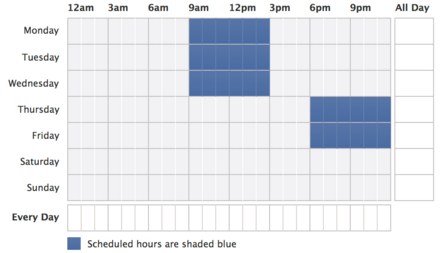
Using your own analytics to determine patterns in audiences’ behaviors will help you fine-tune your targeting to effectively reach interested users, and optimize your ROI. You can infer from the answers to the questions above about your audiences:
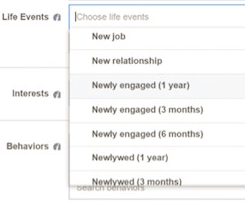
- Lifestyle
- Location and travel patterns
- Jobs, school, family status
… and use this to make extrapolated personas and schedules to keep in mind in your targeted ads.
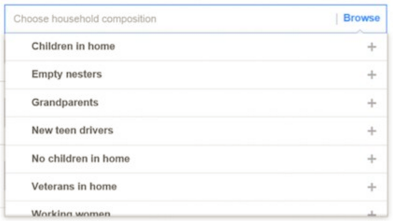 Mobile advertising is continuing to increase in effectiveness. Targeting mobile users not only helps to make use of up-to-date information about traveling and purchasing data, but it markets to an increasing number of users. According to SmartInsights.com mobile ad spend still lags behind mobile media consumption, even though the mobile ad industry has grown by 200 percent since 2012.
Mobile advertising is continuing to increase in effectiveness. Targeting mobile users not only helps to make use of up-to-date information about traveling and purchasing data, but it markets to an increasing number of users. According to SmartInsights.com mobile ad spend still lags behind mobile media consumption, even though the mobile ad industry has grown by 200 percent since 2012.
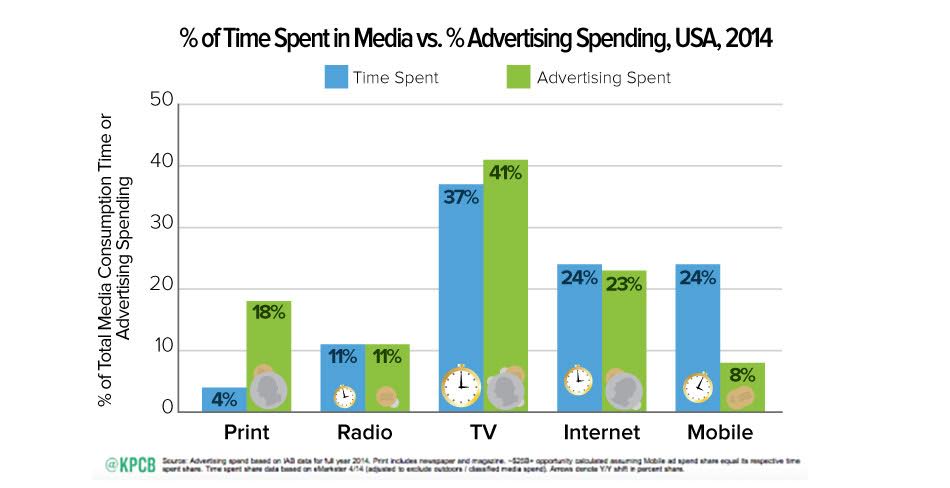
You already have all the data you need in your analytics to know who to target, and Facebook offers an easy way to select demographics. Whether you’re looking to narrow your targeting with general features (like age and city), or look for specific attributes (like “new drivers in a new relationship on summer vacation who live within 2 miles of your business”) we’re able to market with evolving, unprecedentedly specific and accessible tools.

